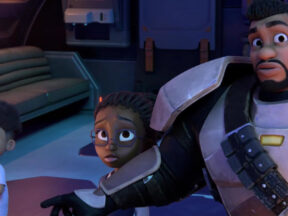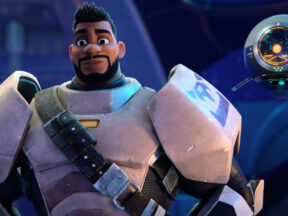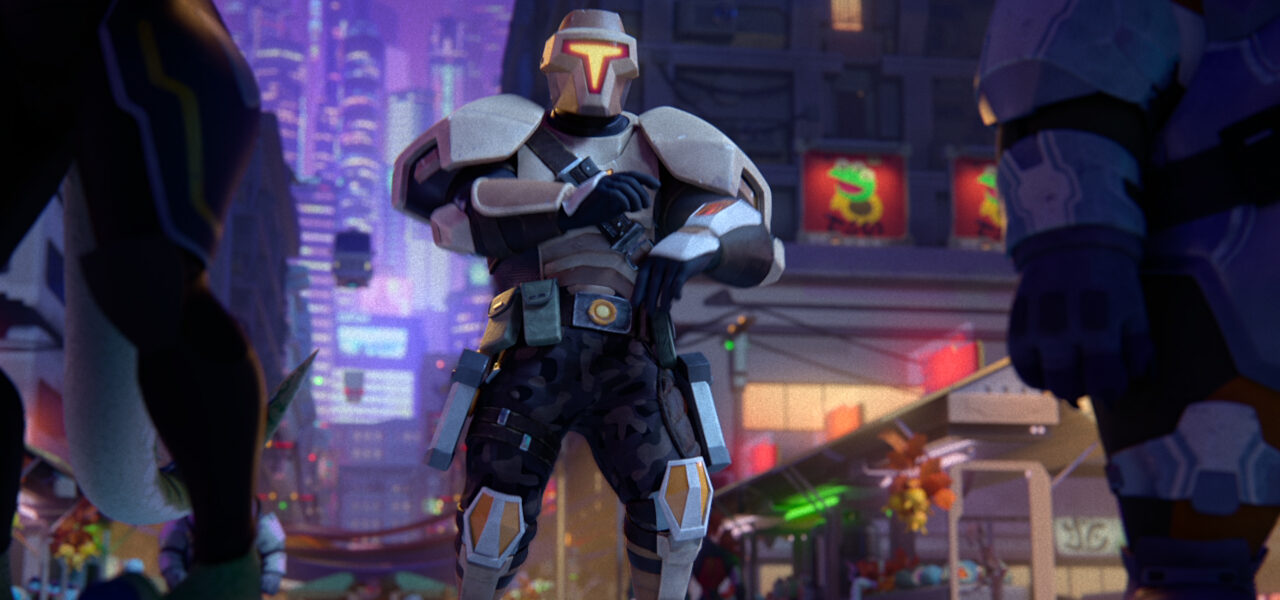
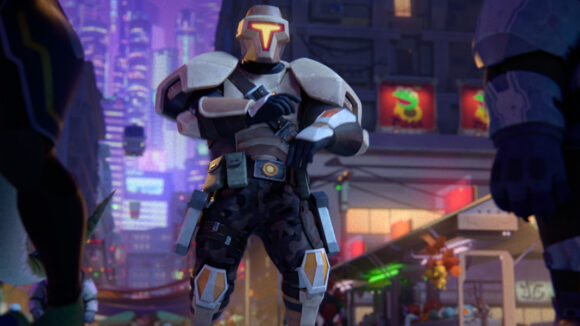
‘My Dad The Bounty Hunter’: Patrick Harpin And Everett Downing Share The Animatic That Landed Them A Netflix Commission (Exclusive)
Netflix’s original animated series My Dad the Bounty Hunter premieres on the platform worldwide tomorrow. Co-creators and showrunners Everett Downing Jr. and Patrick Harpin sat down with Cartoon Brew ahead of the show’s debut to talk us through the very first animatic they put together to pitch the series.
The show, produced by Netflix and animated by French outfit Dwarf Animation Studio, is an action-comedy that tracks siblings Lisa and Sean after they stow away on their dad’s latest work trip, hoping to finally get some quality time with their always-busy old man. Things get out of this world when the two learn that their dad is actually one of the most prominent bounty hunters in the galaxy, tracking down bad guys and bringing them to justice.
Originally Downing and Harpin pitched Netflix with some early screenplays for the show, but it wasn’t until they put together a detailed animatic that My Dad the Bounty Hunter earned a series commission. That animatic, boarded by story artist Gustavo (“Goose”) Cosío, was then used to as the basis for a three-minute cold-open at the beginning of the show’s first episode. Both the original animatic (with rough sound and music) and the final version of the scene are linked below, and their similarities are striking.
Starting Small
Patrick Harpin: Everett and I put this together with storyboard artist Gustavo Cosío, who Everett knew from Maya and the Three. We had written the script for the pilot and we were trying to kind of prove it would work. At the time, we were in development all on our own. We didn’t have any crew yet, not even an editor.
Downing: About two weeks before we started working on this animatic, we had tuned in the script for the first two episodes. There were a lot of questions about if the show would work, if it would be too slow, or have too much family stuff and not enough action. The show is all about family, right? And we needed a couple of episodes to establish that dynamic. But we wanted to do this cold open to promise that action was coming. We wanted to give this chase at the beginning to earn more time to show our characters chilling as a family.
Cold Open
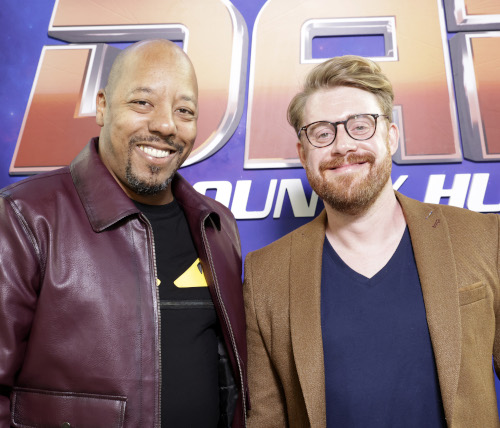
Harpin: In the animatic we made the decision not to show that the bounty hunter is the dad. Of course, the show is called My Dad the Bounty Hunter, but his kids don’t know what their dad does. Anyway, there is a stigma that comes with the title bounty hunter, but we wanted to make the character likable. So, we thought with the cold open we could make the bad guy Blobby kind of a fun jerk who gets away with everything and make the audience feel like “Yeah, ok, I wanna see this guy get caught.”
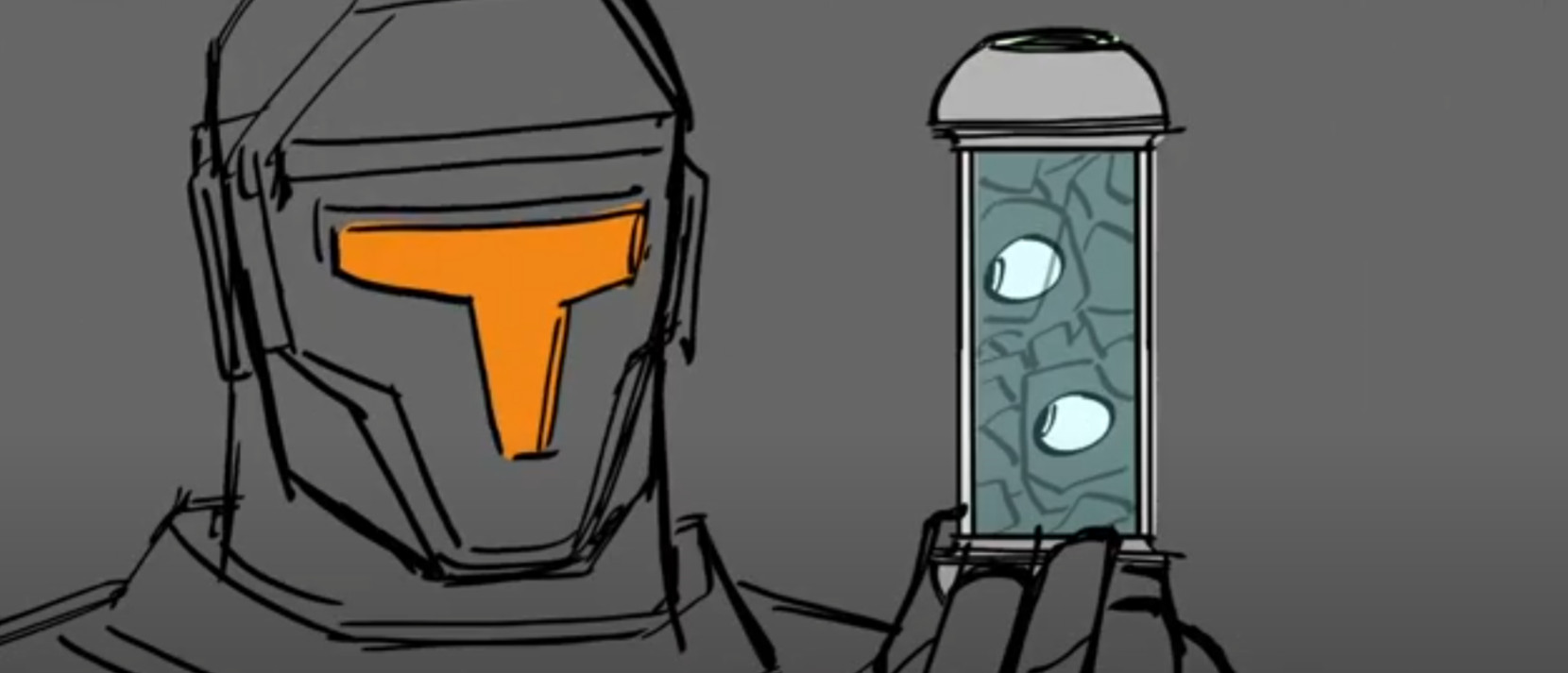
Downing: And that animatic is super close to the final scene too. We didn’t have to make many changes at all. I think an executive asked for a cool action line or something, so we added “You forgot the tip,” but that’s about it.
Avoiding Burnout
Harpin: When people ask for animation advice, I’m always telling them that you have to be able to put up the animatic. We live in a world where you’ll see a screening for a movie with an $80 million budget and the animatic will be trash and you just wonder, “Where did that money go?” So what we did was we hired Goose, who is a way better board artist than either of us, and we boarded some stuff in the show. Board artists are like superstars to me. Everett and I both come from storyboard backgrounds. It’s what we’ve been doing for 10 years or more. So one thing that I believe is that when an artist animates their boards, you absolutely must use the stuff they do. It’s also up to us to give them a strong script and not make too many changes. We can’t come in and say “I rewrote this scene last night, even though you’ve already animated it.” That’s how you burn people out. You have to give them something they know is final so you’re not wasting people’s time.
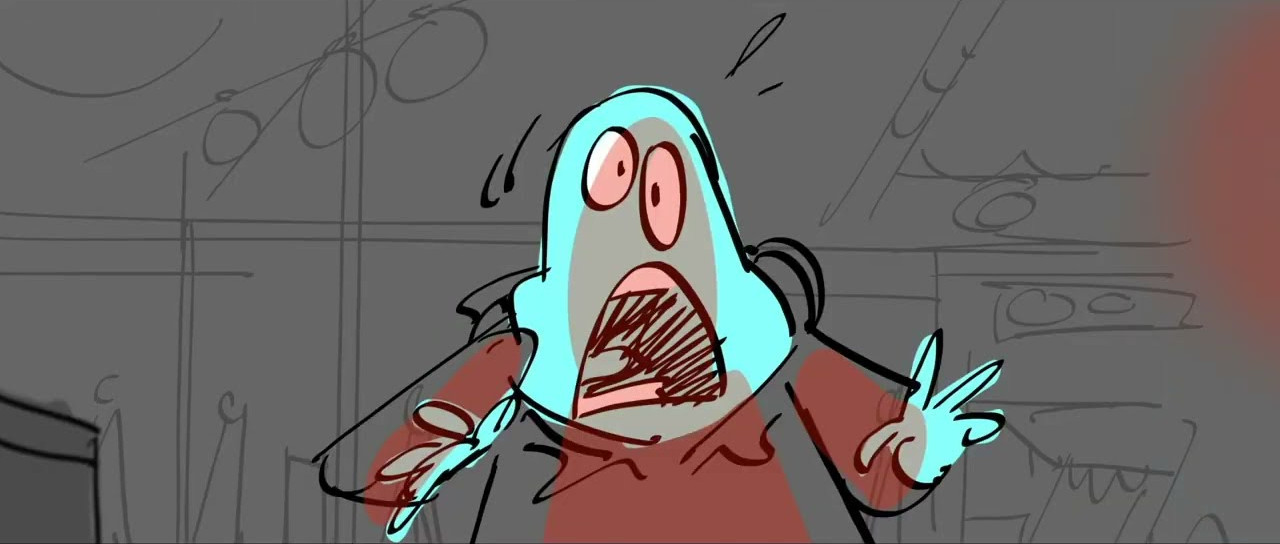
Downing: One thing we did that I think saved a lot of time and energy for our storyboard artist was that we would tell them, “Hey, me and Pat have done this job, we know what it’s like. Don’t burn yourself out cleaning up your boards and trying to make them perfect when you pitch them to us.” We had a kind of model that you had to earn the clean-up before you could spend time cleaning up. I think some artists feel like they need to be cleaning up the whole time, doing iteration after iteration, and that is gonna burn a person out. Pitching a board, sometimes just a stick figure thumbnail is enough, and if those get approved then go clean them up.
Visual Storytelling
Harpin: We want to be smart about the way we use people’s energy. Like, I hate getting bad scripts, it enrages me. So when I give someone a script, I want to be sure I put everything in there, that it’s packed with character and the kind of stuff I’d like to board myself. Then you can just let the artist go to work on the sequence. Goose gets a scene and everything he does just adds magic. When the bounty hunter shoot’s a hole in Blobby’s head and that turns into a smile, that’s from Goose and it helps build the scene.
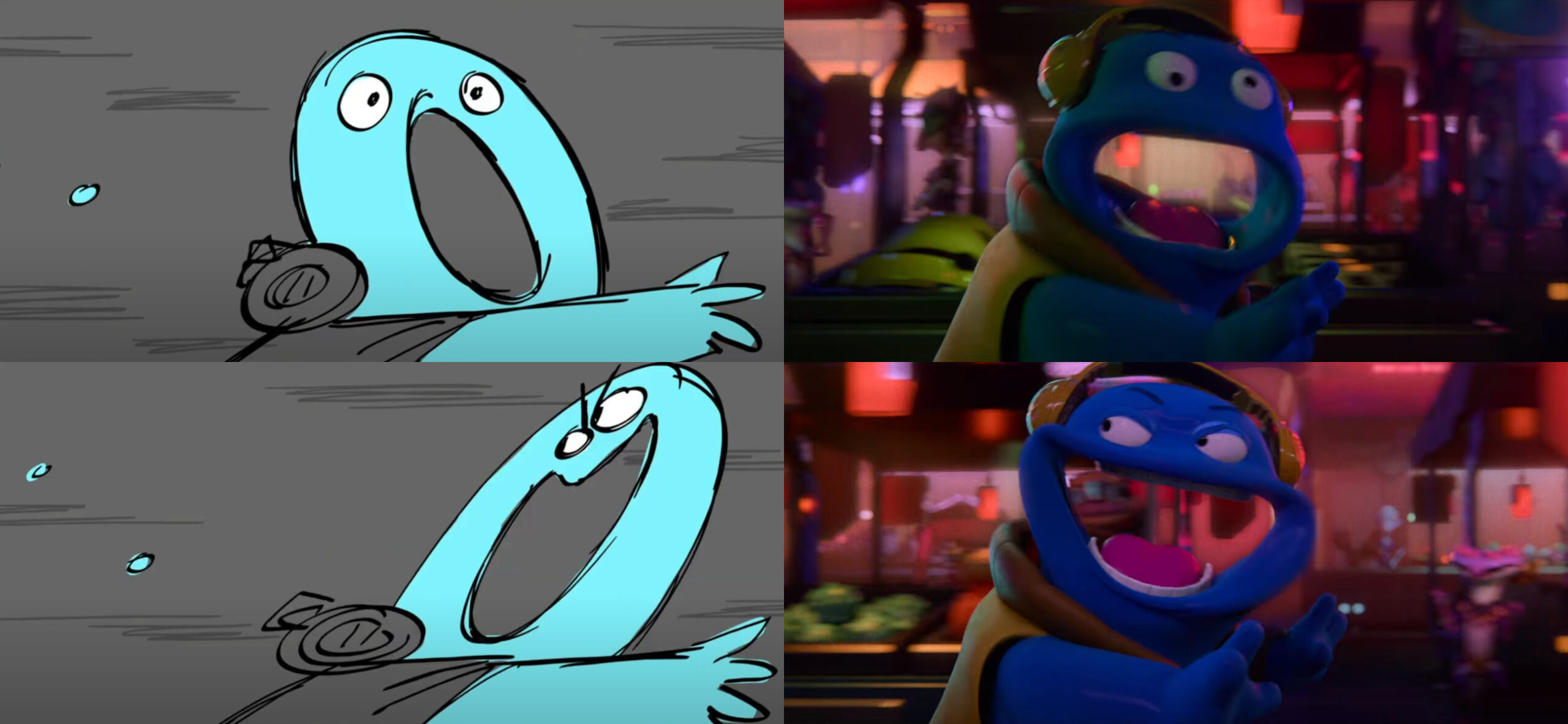
Downing: I think the beauty of storyboard artists is that they bring visual storytelling. A lot of people want to just use them as an artist to create the images, but no. These guys need to be part of the creative process. They add so much and create so many happy accidents.

.png)
